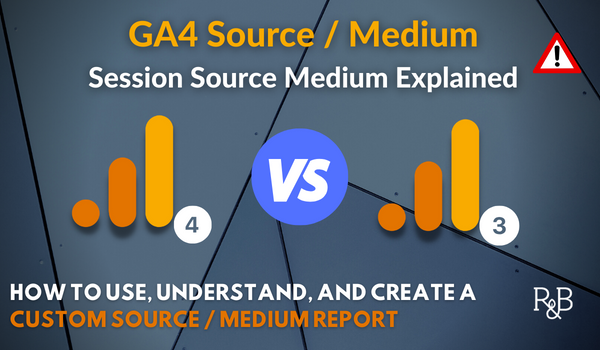Checking out the Idea of Secondary Dimensions in Google Analytics: Definition and Strategic Execution
Checking out the Idea of Secondary Dimensions in Google Analytics: Definition and Strategic Execution
Blog Article
Revealing the Influence of Second Measurement in Google Analytics on Data Evaluation and Insights
In the realm of information analytics, the usage of secondary dimensions within Google Analytics has actually arised as a pivotal tool for extracting deeper understandings and unraveling complicated patterns that could otherwise continue to be obscured. By peeling off back the layers of primary information sets, second measurements supply a nuanced viewpoint that enhances the understanding of customer behavior, internet site efficiency, and the performance of advertising techniques. The real impact and untapped possibility of second measurements are often undervalued, overshadowed by the attraction of main metrics. As we browse with the intricate landscape of information analysis, the relevance of secondary dimensions ends up being significantly apparent, clarifying vital information that hold the key to notified decision-making and calculated optimizations.
Discovering the Principle of Second Dimensions
Secondary dimensions in Google Analytics supply extra understandings by permitting users to assess primary data combined with a secondary quality. This attribute allows a more thorough understanding of the key information by including an additional layer of info for evaluation. By incorporating secondary measurements, customers can dig deeper right into the data and uncover valuable relationships that could otherwise go unnoticed. For instance, by coupling the main data of website web traffic with second measurements like demographics or habits, marketers can gain a more comprehensive view of their target market and tailor their approaches appropriately.
Understanding the idea of secondary dimensions is vital for making the most of the capacity of Google Analytics. It enables customers to section data effectively, identify patterns, and make informed choices based on a more complete photo of their analytics data. By discovering the numerous secondary dimensions available in Google Analytics, individuals can open brand-new understandings and maximize their electronic marketing efforts. Basically, secondary dimensions act as an effective device for boosting information analysis and driving workable outcomes.
Enhancing Data Interpretation With Secondary Measurements
Having actually developed the fundamental understanding of additional measurements in Google Analytics and their critical role in information analysis, the focus currently shifts in the direction of leveraging these secondary credit to improve the interpretation of analytics data (what is a secondary dimension in google analytics). By incorporating second dimensions right into information analysis, experts can acquire much deeper insights right into individual behavior, internet site efficiency, and advertising and marketing effectiveness

In addition, second measurements help in contextualizing main data metrics by offering additional layers of information. This contextualization help in recognizing the 'why' behind the data trends, aiding experts make notified decisions and optimizations to improve overall efficiency. home Inevitably, incorporating secondary measurements improves the data interpretation process, causing even more tactical actions and purposeful understandings.
Uncovering Hidden Insights Via Additional Dimensions
Exploring the midsts of analytics data with second dimensions discloses beneficial insights that would otherwise remain covered. By including additional measurements in Google Analytics, services can discover concealed patterns, patterns, and relationships that provide an even more detailed understanding of customer actions and web site performance. These additional layers of information permit experts to delve much deeper right into the primary dimensions, such as website traffic resources or landing pages, and get a more nuanced point of view on just how different variables engage with each various other.
Through using secondary dimensions, analysts can segment and contrast information across various dimensions, allowing them to identify certain aspects that affect individual engagement, conversion rates, and total success metrics. For instance, by matching the primary measurement of 'gadget category' with the additional dimension of 'age,' marketing experts can identify which age demographics like accessing the web site via smart phones versus desktop computers. This degree of granularity encourages companies to make data-driven choices and enhance their approaches for far better outcomes. Ultimately, uncovering surprise understandings through secondary measurements boosts the deepness and precision of information evaluation, bring about even more enlightened decision-making and improved efficiency outcomes.
Leveraging Second Dimensions for Actionable Analytics
Building upon the understandings unveiled with additional measurements in Google Analytics, organizations can now harness this enriched information landscape to drive actionable analytics and strategic decision-making. By leveraging additional measurements, organizations can delve much deeper into their information to draw out important patterns, fads, and connections that may have previously gone undetected. This deeper degree of analysis makes it possible for companies to obtain a much more comprehensive understanding of customer behavior, project performance, and total web site efficiency.
One key benefit of making use of second dimensions for actionable analytics is the capability to segment data based upon specific standards. This segmentation allows businesses to tailor their strategies and i was reading this campaigns to various audience groups, bring about extra targeted and reliable advertising initiatives - what is a secondary dimension in google analytics. In addition, second dimensions offer a more all natural sight of customer interactions, enabling companies to enhance their internet site content, style, and total customer experience
Maximizing Decision-Making With Additional Dimensions
To improve calculated decision-making in analytics, leveraging additional measurements in Google Analytics can supply a much more nuanced viewpoint on customer actions and project efficiency. By including second measurements right into data analysis, companies can dig deeper into the specifics of their website site visitors' communications and involvement patterns. This added layer of info enables a much more extensive understanding of exactly how different variables, such as demographics, gadgets, or traffic sources, impact key performance signs.

Verdict
Finally, making use of second measurements in Google Analytics plays a crucial function in boosting data analysis and discovering hidden understandings. By exploring this principle, one can acquire a much deeper understanding of user actions and make informed decisions based upon actionable analytics. Leveraging additional dimensions permits an extra extensive analysis of data and optimizes the efficiency of decision-making procedures.

Report this page